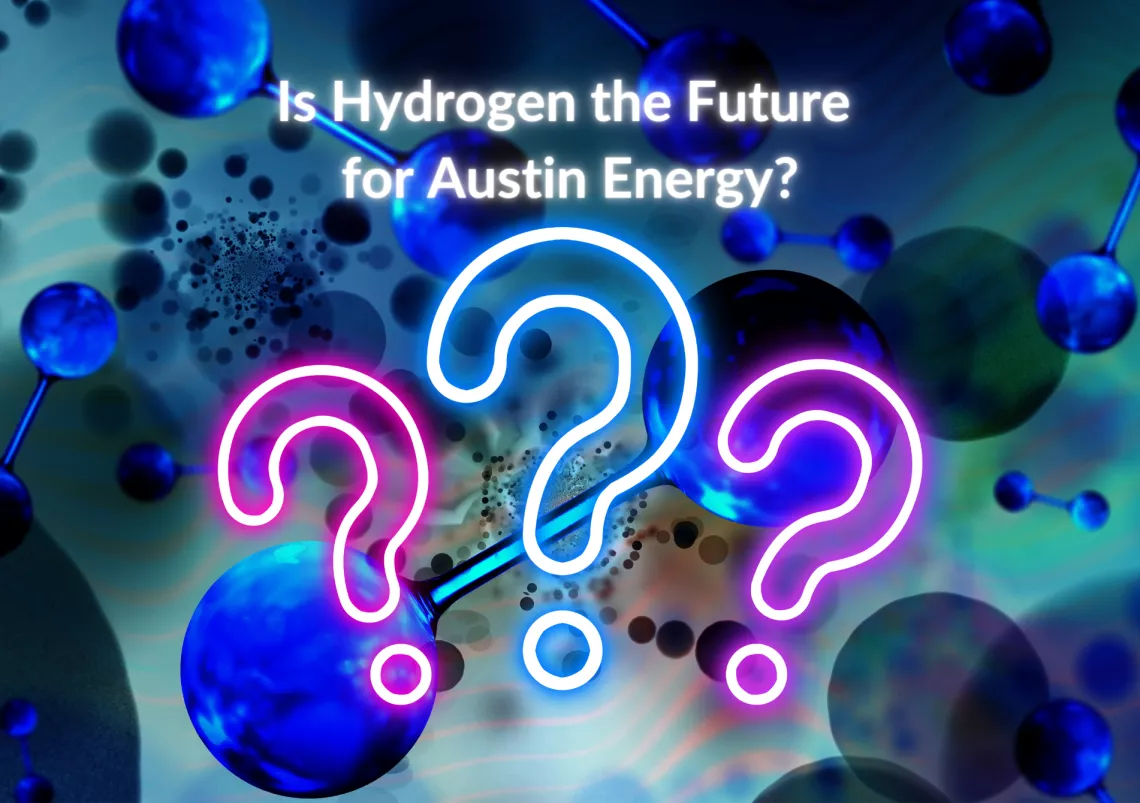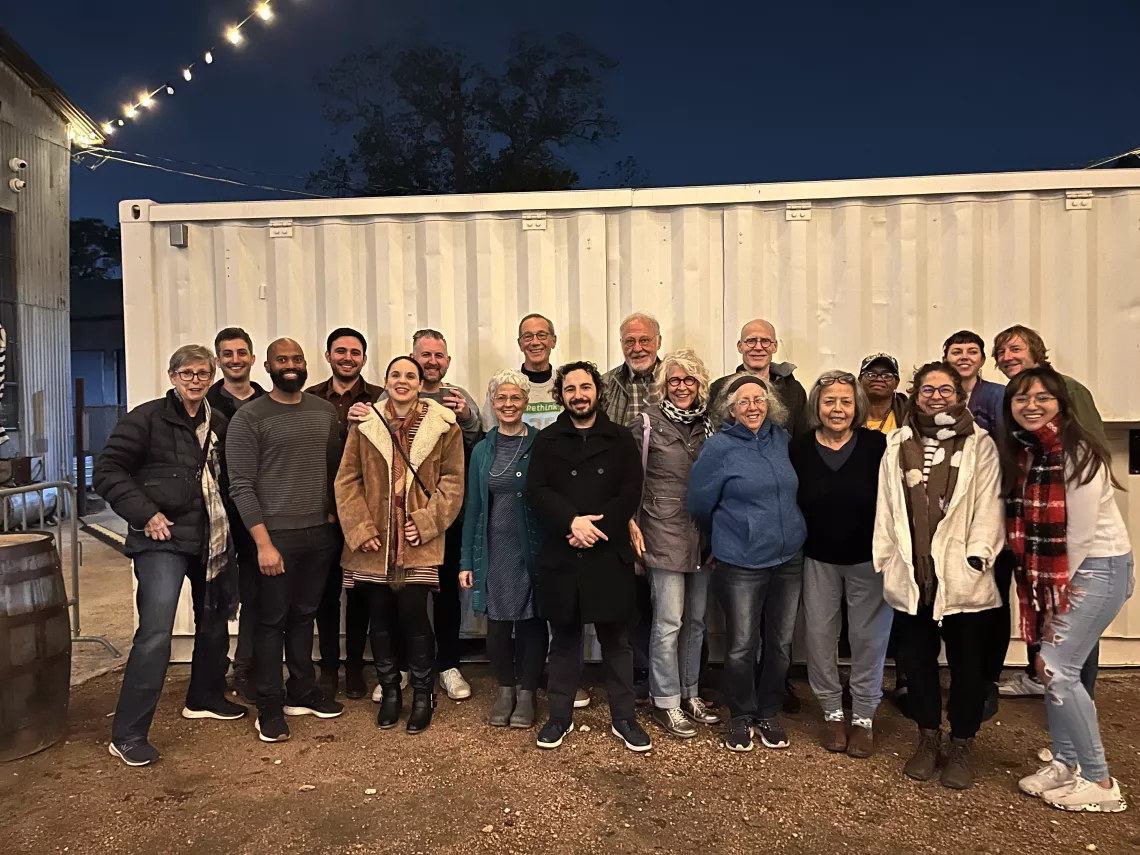
Illustration of hydrogen molecules by geralt
For the past few months, the Sierra Club Lone Star Chapter has been working to bring more visibility and public engagement to Austin Energy’s process of updating its “Resource, Generation, and Climate Protection Plan.” This plan will determine how quickly Austin’s publicly owned utility shifts to carbon-neutral energy sources. (Read this post for more background.)
On Monday, November 13th, the public finally got a look at what Austin Energy leadership is thinking in terms of how it will update its plans, and specifically how it can meet the current goal of becoming a zero-carbon utility by 2035. While Texas’s second largest municipal electric utility did not actually lay out its full set of recommendations, it did release 11 different scenarios for how it could meet the 2035 goal that was set by City Council back in 2020. It is important to note that one of the requirements of the 2020 plan – that Austin Energy consider the potential to meet a zero-carbon goal by 2030 – has yet to be modeled by Austin Energy.
A couple of the scenarios Austin Energy did model were business-as-usual scenarios with an assumption that we end the use of coal by 2030, stop running our current gas plants by 2035, reach 65% renewable energy by 2027, but do not add any additional battery storage, renewables, or a more aggressive scenario of demand response and energy efficiency. The other nine scenarios would add approximately 1,000 MWs of additional resources.
A link to Austin Energy’s presentation can be found here.
So which scenarios were winners: not only lowering costs, but also able to withstand winter extremes or severe regulatory changes imposed by the Electric Reliability Council of Texas (ERCOT) and the Public Utility Commission (PUC)? Only four of the 11 scenarios, all of which would involve heavy investment – at least 800 MWs – in something called “Hydrogen Capable Combined Cycle,” or HCCC.
What the heck is HCCC?
In the course of the discussion between members of the Electric Utility Commission (EUC), it became clear that HCCC could involve between one and five 200 MW-units of a power plant that could burn both gas – the same product we are actively trying to get out of – and some version of hydrogen, the hot-burning gas that could have some climate benefits eventually but as yet is underdeveloped and untested. Austin Energy appears to be assuming that initially these future plants – located somewhere in the Austin Energy service area – would run mainly on fracked gas until some unknown future date when they would run on 75% “green” hydrogen, created by turning water into hydrogen through electrolysis.
A good resource on hydrogen from the Sierra Club can be found here. It states that green hydrogen may have some great applications in the future – think long-distance heavy transportation – but probably not for power plants. The reason? The amount of electricity needed from renewable energy to run the electrolyzer to split the water atoms to create hydrogen is so high that it would be better to just use renewable energy for electricity.
To say that members of the EUC were skeptical of Austin Energy's presentation is an understatement. While Austin Energy said that the technology was available, the fine print made it clear there is no hydrogen – green or otherwise – available to use in the Austin area, no existing pipelines, and certainly no electrolysis plants to make green hydrogen.
In particular, locking in investments in “HCCC” essentially means we would keep burning gas for many years, assumes that leaks from hydrogen pipes (which have huge climate change impacts) would not occur, and ignores local pollution such as nitrogen oxides that form when hydrogen is combusted. In addition, Austin Energy assumed costs for the HCCC in the $1,000/kW to $1,100/kW, which is much cheaper than other entities have projected for building a power plant.
Moreover, Austin Energy ignored other resources that do not produce carbon dioxide and are dispatchable (energy-speak for "always available") such as geothermal (which they said is not available and presumably won’t be for many years) and multi-day long duration storage. Instead, Austin Energy only looked at lithium-ion battery storage and not other forms of storage.
Does this mean Austin City Council will adopt Austin Energy’s preferred strategy of building gas- and hydrogen-burning power plants?
No, the process is just beginning. First, Austin Energy has not actually made a specific recommendation but only offered scenarios that heavily favor hydrogen. Second, not everything in Austin Energy’s presentation is negative. It does state that local storage, local solar, and further investments in energy efficiency and demand response would be helpful in general to lower costs and provide more reliability as we wean ourselves from fossil fuels.
Second, Austin Energy leadership is not the decision-makers. Their board of directors is the Austin Mayor and City Council, which means they need to hear from you.
Third, even before Austin Energy directly asks the City Council to approve an update to the resource plan, there are several bodies that are reviewing and providing input to that plan.
For example, the Electric Utility Commission has clear guidance from the City Council to provide their own input on a resource plant update. In response, the EUC named a 17-person workgroup composed of several EUC members, several members from the Resource Management Commission, and members of the public. That workgroup has already met eight times and is scheduled to meet twice during December: December 5th and December 19th. That workgroup is going to be digging into the scenarios and has let Austin Energy know they will be requesting two to four additional scenarios, including at least one that involves meeting a more aggressive 2030 zero-carbon scenario. Information about the EUC Working Group can be found here - AustinEUCResourcePlanningWG.org.
Sierra Club’s Cyrus Reed is the chair of the workgroup, which includes many other organizations that are generally aligned on moving toward a clean energy future. That group will be coming up with its own recommendations for consideration by the full Electric Utility Commission, Austin Energy, and ultimately, the City Council.
So how can you get involved?
Folks in Central Texas are about to have our best chance locally to shift away from fossil fuels and toward a more sustainable, equitable, affordable energy future… but only if we make our voices heard.
Click here to send a message to Austin Energy: no more fossil fuels!
While no decision on the resource plan will be made immediately, we do expect City Council to take up the resource plan in late February or early March.
In the meantime, we are organizing! Below is a photo from our recent Clean Energy Organizing Meetup & Social at Central Machine Works in Austin. We are gathering signatures on our petition to Austin City Council that sets a goal of making Austin carbon-free by 2030, we’re informing our friends and neighbors about Austin Energy’s plans, and we’re speaking up.

The public is also welcome to attend upcoming Austin Electric Utility Commission workgroup meetings on December 5th and December 19th from 3 to 5pm at Austin Energy’s headquarters. The next full Electric Utility Commission meetings will be held on January 8th and February 12th at Austin Energy’s headquarters from 6 to 8pm.